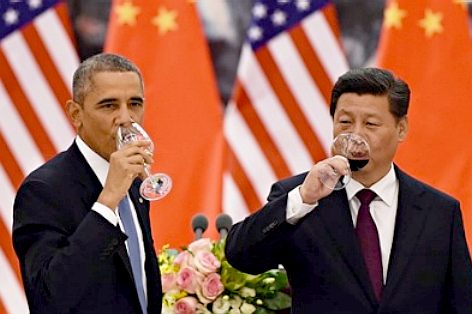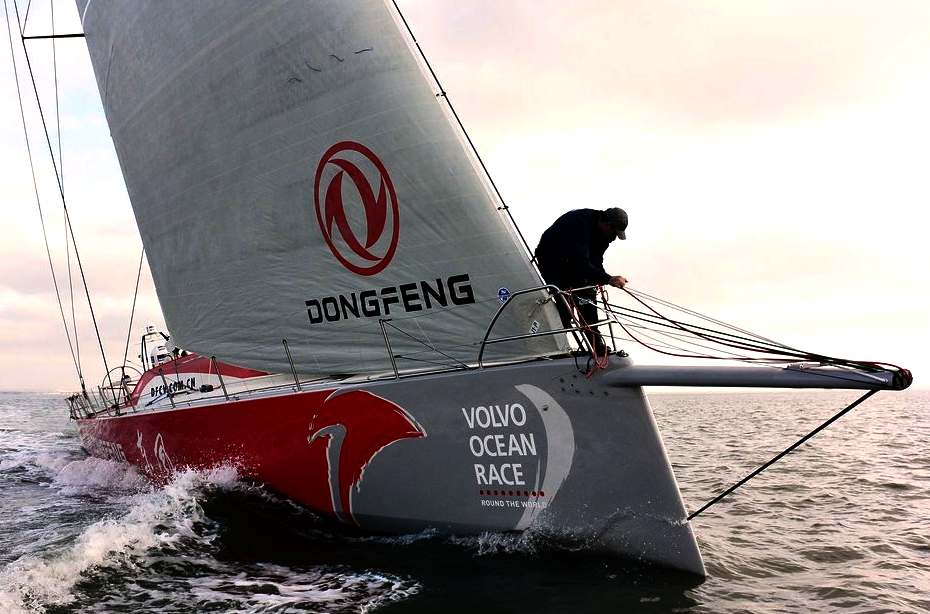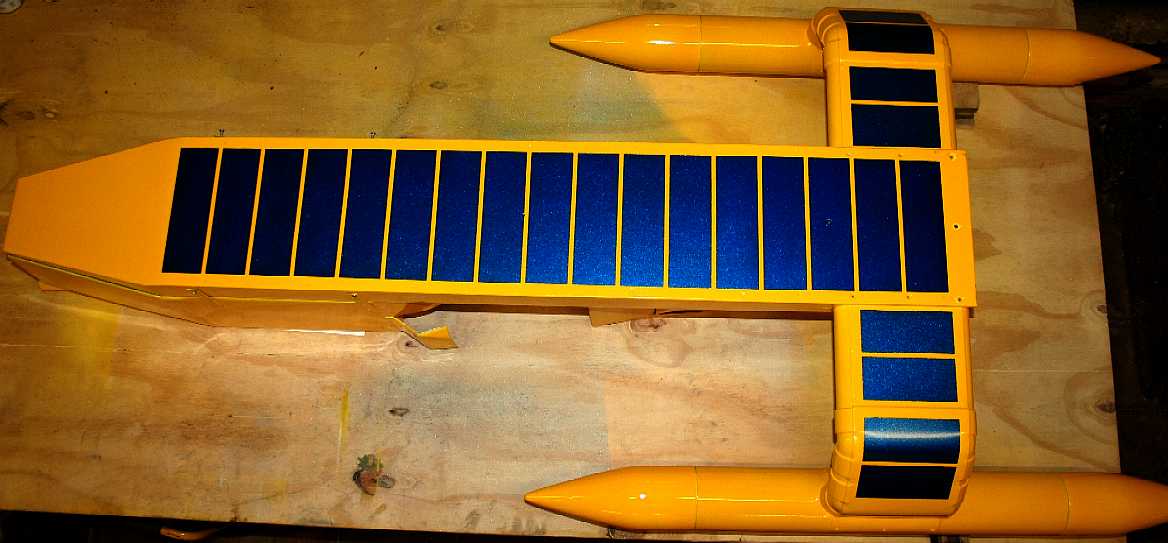|

欢迎光临我们的网站
我们构建了车辆原型和开发汽车零部件。我们希望与其他高科技电子公司,汽车构造,海洋建筑师和学者合作,开发产品,改善交通,通讯和能源利用,尤其是使用机器人技术。
具体来说,我们正在寻找与政府和企业的国际合作,特许或其他方式利用知识产权开发,造福人类,在以下几个方面:
-
1。自主导航系统,以提高AIS,该技术使用AI到一个新的水平。
2。海洋能源来自大自然的收获,机器人智能控制人为。
3。一个瞬间能量传输系统,电动陆地车辆,尤其是竞争的车辆。
海上安全将提高许多倍的占用“SNAV,”这不只是一个自动驾驶仪操纵的船,而不是仅仅是一个自动识别系统(AIS),但系统能够的机器人超过碰撞法规(COLREGS)心计“只是在时间”的到来,并充分考虑到其他海洋观众,所以挽救生命和燃料。这是实现与先进的计算机算法和相关的电子传感器与船舶舵控制。
在目前的时间,型式认可(或认证),是一个问题,我们希望把休息国际海事组织经批准,“海上人命安全公约”的认可和遵守,包括其他适用公约
- 这可能需要严格的论证和测试结果分析。这可能是特别感兴趣的海军开始,但我们希望将弹射货物和游船运营商主动提升自己的船队,以实现节约成本,提高安全水平。目前有许多小型自治在海上作业的船舶免于COLREGS正确的,它什么也不做事业推向前进,而是闪的主要问题。
在2012年,太阳能动力船PlanetSolar“证明,它有可能只使用来自太阳的能量,创下2.85海里全球导航。除了航行安全,我们希望提高平均车速由大自然的船舶7节以上的平均巡航速度
- 超越。这是唯一可行的研究和协作。
我们期待着您的来信,我们怎样互相帮助。

CHINA
USA DEAL TO CUT EMISSIONS - THE
GUARDIAN 12 NOV 2014
The
United States and China have unveiled a secretly negotiated deal to reduce
their greenhouse gas output, with China agreeing to cap emissions for the
first time and the US committing to deep reductions by 2025.
The
pledges in an
agreement struck between President Barack Obama and his Chinese
counterpart, Xi Jingping, provide an important boost to international
efforts to reach a global deal on reducing
emissions beyond 2020 at a United Nations meeting in Paris next year.
China,
the biggest emitter of greenhouse gases in the world, has agreed to cap
its output by 2030 or earlier if possible. Previously China had only ever
pledged to reduce the rapid rate of growth in its emissions. Now it has
also promised to increase its use of energy from zero-emission
sources to 20% by 2030.
The
United States has pledged to cut its emissions to 26-28% below 2005 levels
by 2025.
Be in no doubt, the agreement struck by the US and
China on Wednesday to cut their carbon emissions is historic. It is the biggest step towards achieving a meaningful global deal to fight climate change in 20 years of tortuous negotiations. But also be in no doubt that, while absolutely necessary, it is a long way from being sufficient. As
President Barack Obama says, it is a “milestone” – a marker on a longer journey.
Without sharp and rapid cuts in greenhouse gases the world faces “severe, widespread, and irreversible impacts” on people and the natural natural world: floods, droughts and even wars. That conclusion from the world’s scientists was signed off on 2 November by 194 nations.
But no progress was going to happen without the world’s two biggest polluters, the US and China. The deal they have struck has the potential to end the stand-off that doomed efforts to sign a global deal in Copenhagen in 2009. That coalition of the unwilling is now becoming a coalition of the willing.
The difficulty of tackling climate change cannot be underestimated. Emissions now mean damage later, making it tempting to stall. It is a “global commons” problem - the solution requires all nations to act together, not alone. Moreover, in practical terms, it requires re-engineering the entire world’s energy system, which is itself the engine of the global economy. And there’s the huge challenge of solving global poverty along the way.
With so much at stake, the negotiations are the among the toughest the world’s nations have ever undertaken. But, put bluntly, it’s a haggle. There is a limit to how much
CO2 can be pumped into the atmosphere before dangerous climate change becomes inevitable. The bartering is over how much of that remaining space each nation deserves to get.
The significance of the China-US deal is that they have now put their first serious offers on the table. In fact they have done so early – the deadline for these bids set by the UN was March 2015. The deadline for a final global deal is December 2015 in
Paris. Until now, it was unclear that deal would be done. But the US-China agreement has injected that most precious and rare of commodities into global climate negotiations: momentum.
There is a long way to go yet. The measures announced by the US and China fall well short of what is needed to defeat global warming. The key, as in any haggle, is to keep upping the bids.
Obama said the US pledge to cut carbon by 26-28% by 2025, compared to 2005 levels, would double the pace at which it is reducing its emissions. But it’s a smaller cut than that agreed in October by the EU. Its 40% cut by 2030 is compared to a higher baseline of 1990. China has pledged to get 20% of its power from zero-carbon sources by 2030. But is already on track for 15% by 2020.
The signal that these are opening bids is in the qualifying language. China’s emissions will reach their peak by 2030 “or earlier”. The EU’s carbon cut is “at least” 40%.
The US-China deal is also highly significant in the clear signal it sends to the energy industry, who will invest trillions of dollars in the coming decades. China has said clearly for the first time that its huge hunger for coal will soon be sated. The US has said its wants to use less oil and gas, not more. Those are warning signs for today’s climate deal refuseniks,
coal-rich Australia and
oil-sand-rich Canada, and their fossil fuel friends.
Instead, the US-China deal points to clean and renewable energy as the place for the smart money to go. China’s pledge of 20% clean energy by 2030 means 800-1,000GW of new
wind, solar,
nuclear and other zero-emission technology. That addition alone is about the same size as the entire US electricity sector today.
John Kerry, US secretary of state, provided a clear-headed summary of Wednesday’s US-China agreement. “There is no question that all of us will need to do more to push toward the de-carbonisation of the global economy. But in climate diplomacy, as in life, you have to start at the beginning, and this breakthrough marks a fresh beginning.”
Finally, 25 years after the world was first warned that global warming was a serious problem, we have reached the start of the solution.

CHINA
ENTERS VOLVO OCEAN RACE
http://dongfengraceteam.cn/
http://www.volvooceanrace.com/
东风队,一支由东风商用车公司投资组建并由国际领先帆船比赛管理公司OC
Sport管理的团队,将会参加沃尔沃环球帆船赛2014-2015赛季的比赛。拥有众多中国籍工作人员的岸上团队、参赛船队、以及保障团队将协同作战,
全面展现东风队“中国远洋帆船”的核心价值。东风队是第三支正式宣布参加这项世界级顶尖环球远洋帆船赛的团队,2014-2015赛季的比赛将于2014
年10月11日从西班牙阿里坎特出发。7艘正在建造中的统一设计的高性能新帆船Volvo
Ocean 65已经为下一届的沃尔沃环球帆船赛做好准备。 
横贯中国炮弹国际ZEV运行是沿着一些最山区的乡村世界的一个有趣的客场之旅。有些停车点之间的距离超过200公里。另外,有可能无法快速充电点在逻辑分区的充电位置,这将意味着显著时间延迟对于不具备加油超过主电源电力的充电以外的手段的车辆。 
|

|

|

|

|

|

|

|

|

|

|

|
|
Arabic
|
Bengali
|
Chinese
|
Espanol
|
French
|
German
|
Hindi
|
Japanese
|
Korea
|
Portuguese
|
Russian
|

SEAVOLUTION
- The key to economic plastic recovery from the vast oceans is solar power; harvesting
free energy
from nature - in our case also including wind power - to boost energy
levels. Full size, this
autonomous vessel could filter up to 150 tons of plastic
from polluted seawater
before it has to offload - without using a drop of diesel. There is a market for recycled
plastic. According to the latest report from the University
of California) there is between 4 and 12 million tons in our oceans.
That's a phenomenal untapped resource that is growing every year. The
Enterprise 1 is shown here without its moveable wings, just the deck and
arm panels.
|




